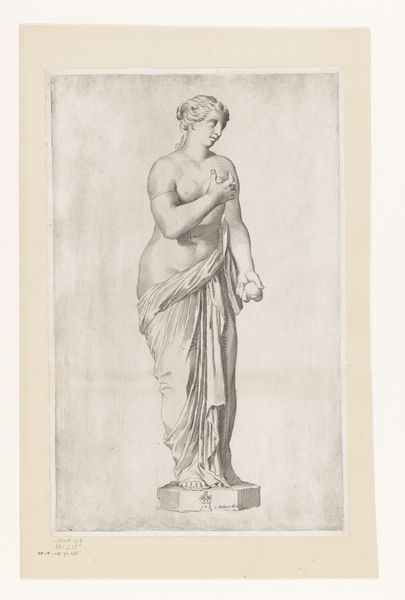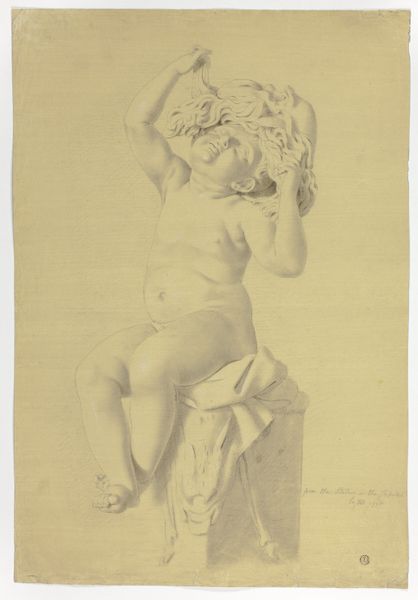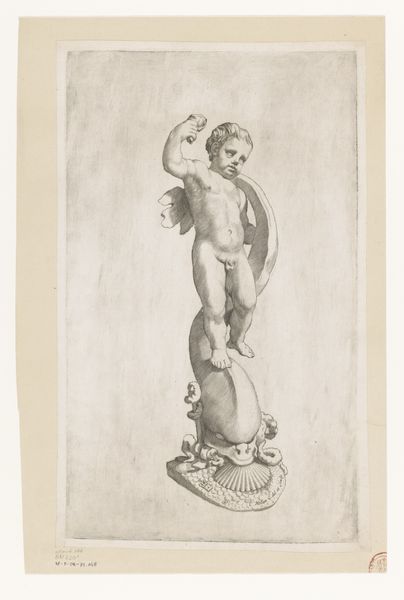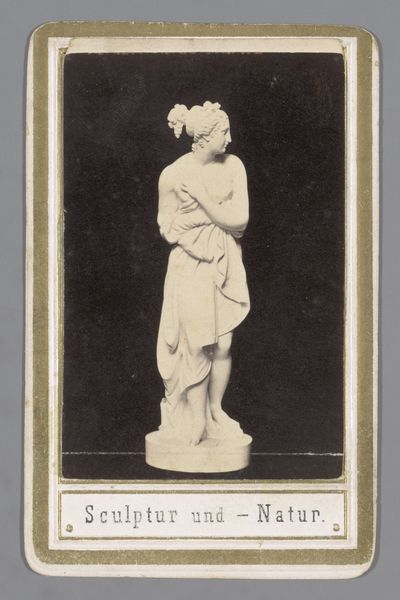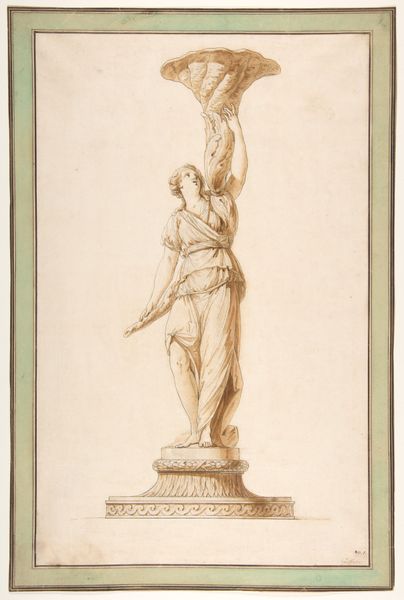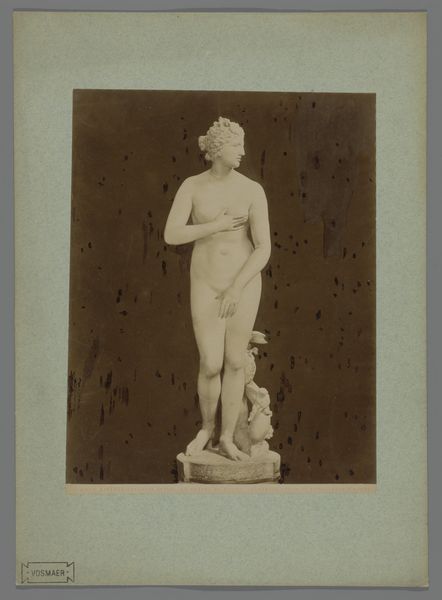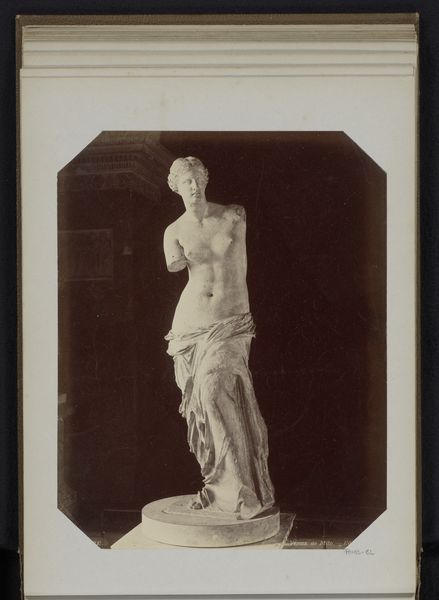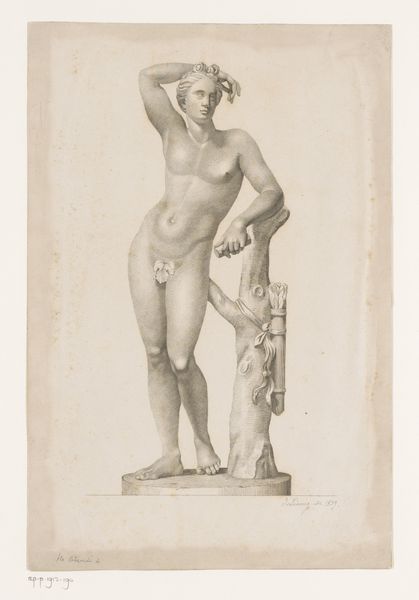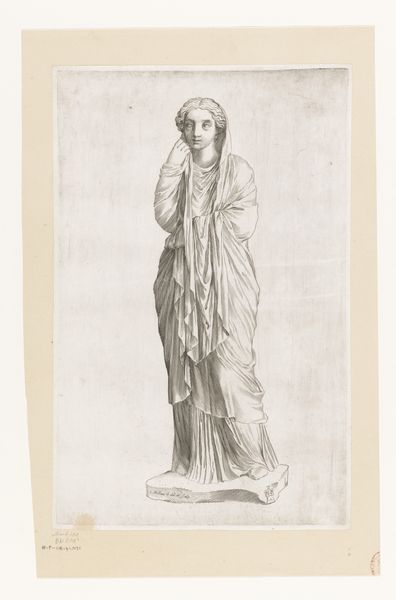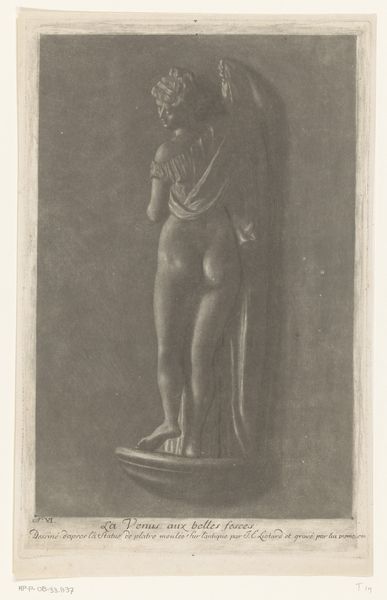
drawing, paper, pencil
#
drawing
#
baroque
#
figuration
#
paper
#
pencil drawing
#
pencil
#
history-painting
#
nude
Dimensions: height 373 mm, width 232 mm
Copyright: Rijks Museum: Open Domain
Curator: This drawing, currently housed in the Rijksmuseum, is titled "Standbeeld van Venus." Claude Mellan completed it sometime between 1631 and 1637. Editor: It’s a beautiful study. I'm immediately struck by its muted palette and the figure's serene, almost melancholy posture. The way the light plays across her body is expertly rendered. Curator: Indeed. Mellan employed pencil on paper, and his technique reveals much about artistic practices of the time. This drawing wasn't necessarily intended as a finished piece. Rather, it's likely a study for a larger work, an exploration of form, light, and shadow through the relatively accessible medium of pencil. We must remember, access to materials and artistic training wasn't universally available; it speaks to the artist’s background and the societal value placed on such skills. Editor: Precisely. Let's consider that rendering of light, for instance. The careful hatching and cross-hatching build a delicate luminosity. We could examine it in terms of chiaroscuro, the interplay between light and dark, to understand the visual hierarchy of forms, guiding our eye through Venus's pose. And those baroque, heavily folded draperies, which she holds delicately…they frame the body perfectly. Curator: I wonder about the accessibility of the image of Venus herself. Mellan would likely have drawn from ancient Roman sculpture, a conscious act of reinterpreting and recontextualizing a classical figure for a contemporary audience and for those wealthy enough to purchase his work, reaffirming and perhaps negotiating established hierarchies. Editor: I agree; Mellan translates the monumentality of sculpture to the more intimate, approachable scale of the drawing. Even the textural contrast is engaging. The smooth skin offset against the detailed rendering of the draped cloth creates a captivating haptic experience, despite it being two dimensional. Curator: In studying these pieces, we see that their cultural relevance extended from their making to how art sustained the patrons and their world of acquisition. Editor: For me, the effectiveness lies in Mellan’s control of line, texture, and composition. Those decisions allow us, centuries later, to find aesthetic appreciation, whatever context they were conceived within.
Comments
No comments
Be the first to comment and join the conversation on the ultimate creative platform.
